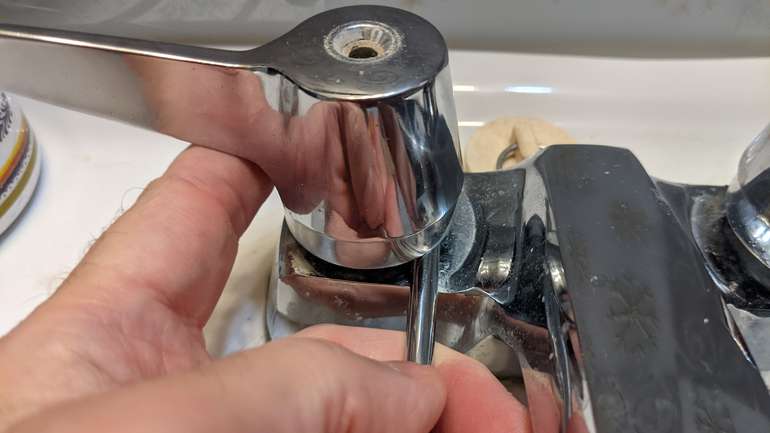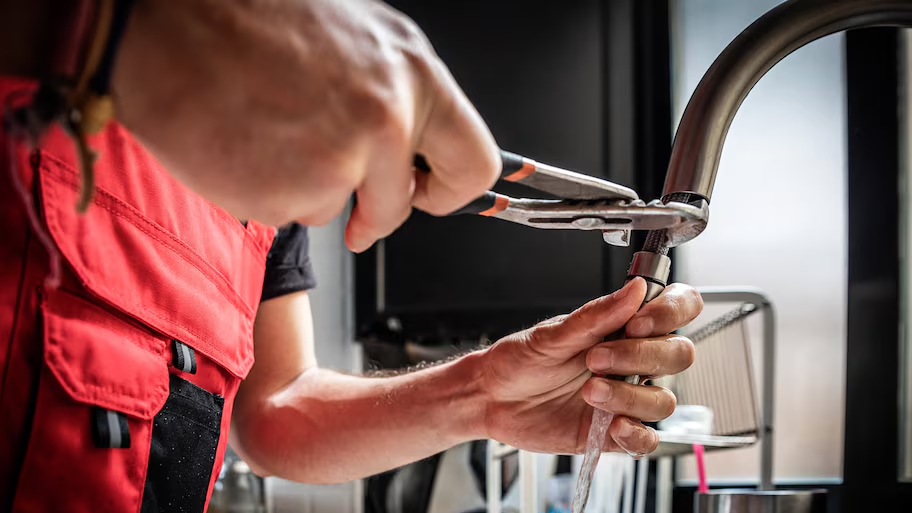Factors Why It's Important to Fix a Broken Faucet
Factors Why It's Important to Fix a Broken Faucet
Blog Article
Everybody may have their own unique opinion in relation to What Causes Leaky Faucets & How To Fix Them.

Leaking taps may seem like a small aggravation, but their effect exceeds simply the annoyance of the sound. From drainage to sustaining unneeded financial costs and health risks, disregarding a leaking faucet can result in different repercussions. In this article, we'll delve into why it's crucial to resolve this usual household issue promptly and effectively.
Wastefulness of Water
Ecological Impact
Trickling faucets add dramatically to water waste. According to the Environmental Protection Agency (EPA), a solitary faucet trickling at one drip per second can waste greater than 3,000 gallons of water per year. This not only strains water sources however also impacts ecosystems and wild animals based on them.
Financial Prices
Increased Water Expenses
Past the ecological effect, leaking taps can inflate water expenses substantially. The collected wastefulness over time equates right into greater utility expenses, which could have been avoided with prompt repairs.
Prospective Residential Or Commercial Property Damages
Additionally, long term trickling can bring about harm to components and surface areas surrounding the faucet. Water accumulation can cause discoloration, corrosion, and even structural issues if left unattended, causing added repair service costs.
Health Problems
Mold and Mildew Development
The continuous presence of dampness from a dripping tap creates an ideal atmosphere for mold and mildew and mildew development. These fungis not only jeopardize interior air high quality but likewise posture health dangers, specifically for individuals with breathing problems or allergies.
Waterborne Conditions
Stationary water in dripping faucets can become a breeding ground for germs and various other microorganisms, raising the threat of waterborne conditions. Pollutants such as Legionella germs flourish in stagnant water, potentially resulting in major diseases when ingested or breathed in.
Do it yourself vs. Expert Fixing
Benefits and drawbacks of Do It Yourself Repair Service
While some may try to take care of a dripping tap themselves, DIY repairs feature their very own collection of difficulties. Without proper knowledge and devices, do it yourself efforts can worsen the problem or result in incomplete fixings, lengthening the issue.
Benefits of Employing a Professional Plumber
Working with an expert plumber guarantees that the underlying source of the leaking faucet is resolved successfully. Plumbings possess the expertise and equipment to detect and fix faucet concerns effectively, conserving time and reducing the threat of further damage.
Step-by-Step Overview to Fixing a Dripping Tap
Tools Required
Before trying to repair a trickling tap, gather the required tools, consisting of a flexible wrench, screwdrivers, substitute components (such as washing machines or cartridges), and plumber's tape.
Usual Tap Issues and Their Solutions
Recognize the sort of tap and the details concern creating the drip. Usual issues include worn-out washers, rusty valve seats, or defective O-rings. Refer to manufacturer instructions or on-line tutorials for detailed assistance on repairs.
Safety nets
Normal Maintenance Tips
To avoid dripping taps, do routine upkeep such as cleaning aerators, inspecting for leaks, and replacing worn-out components immediately. Additionally, take into consideration mounting water-saving devices or updating to more effective components.
Significance of Prompt Fixes
Addressing leaking taps as quickly as they're discovered stops more water wastefulness and possible damages, eventually saving both water and cash in the future.
Influence On Residential Property Worth
Assumption of Well-Maintained Property
Maintaining a residential property in good condition, including addressing maintenance concerns like trickling faucets, boosts its regarded worth and worth among potential purchasers or tenants.
Impact on Resale Worth
Qualities with well-kept plumbing fixtures, consisting of faucets, command greater resale worths in the realty market. Addressing trickling faucets can add to a positive impact during residential or commercial property examinations and negotiations.
Ecological Responsibility
Private Payment to Conservation
Taking obligation for taking care of trickling faucets lines up with wider initiatives towards water conservation and environmental sustainability. Every individual's actions collectively make a significant effect on protecting valuable resources.
Sustainable Living Practices
By prioritizing timely repair work and embracing water-saving practices, individuals contribute to lasting living techniques that profit both present and future generations.
Verdict
Resolving a leaking faucet goes beyond plain comfort; it's a vital step towards saving water, reducing economic expenses, and guarding health and wellness and property. Whether with do it yourself repair services or professional help, taking action to take care of dripping faucets is a tiny yet impactful way to promote accountable stewardship of sources and add to a healthier, a lot more lasting future.
How to Fix a Leaky Faucet: Step-by-Step Repair Guide
A leaky faucet may seem like a simple annoyance, but if it's not fixed promptly, that leak could cost hundreds to potentially thousands. From water damage to mold, mildew, and high water bills, even a tiny leak can be catastrophic if left unattended. Damage like this can even affect the overall value of your home, so it's important to take the right approach for leaky faucet repair. You may need the help of a plumber in some cases, but we've got a few tips you can try on how to fix a leaky faucet before calling the pros.
Four Faucet Types
When you're learning how to fix a leaky faucet, the first step is knowing what kind of faucet you're working with! There are four common types.
Cartridge Faucets
Cartridge faucets come in one- or two-handled varieties. In one-handled cartridge faucets, hot and cold water combines in a single cartridge. In the two-handled versions, hot and cold water are controlled separately and mixed in the faucet.
Ball Faucets
Ball faucets have a single lever you push up and down to adjust the pressure and rotate to change the temperature. A slotted metal ball controls the amount of water allowed into the spout.
Compression Washer Faucets
They're the oldest type of faucet, but they're still used in many homes — especially older ones. Compression faucets have two separate handles that, when turned, raise or lower the washer that seals a water valve. This valve stops water from flowing through the faucet when it is turned off.
Disc Faucets
Disc faucets rarely need to be repaired due to their maintenance-free design. The water flow is controlled by two discs — the upper one raises and lowers against a fixed lower disc, creating a watertight seal. If your disc faucet starts leaking, you may need to replace the seals or clean residue buildup from the inlets.
Fixing a Leaky Faucet
Step 1: Turn Off the Water
Whether you're learning how to fix a leaky bathtub faucet or how to fix a leaky kitchen faucet, always turn off the water supply to your working area when you're fixing a leak. The last thing you want is a flood added to your list of things to fix.
Look for the shutoff valves below your sink or around the tub and turn them clockwise to stop the water flow. If your faucet doesn't have shutoff valves, you may need to turn off the water for the whole house. Check to make sure it's off by turning the faucet on. If nothing comes out, you're ready to start the repair.
Step 2: Take Apart the Faucet
How you disassemble your faucet depends on the type of fixture you have. You can use a flathead screwdriver to remove the caps on top of the handle or handles for cartridge and compression faucets. Inside, you should see handle screws. Unscrew these with a screwdriver to remove the handle.
Disc- and ball-style faucets will typically have an inlet screw near the handle, and removing that will reveal the interior of the faucet.
Detach the Valve Stem
For cartridge- and compression-style faucets, you'll see the inner valve stem or cartridge once you remove the faucet handles. If you have a compression faucet, unscrew the brass valve stem. If you have a cartridge faucet, pull out the cartridge. If your cartridge has been in place for a while, it may require some tools or extra force to remove it due to mineral deposits.
Examine and Replace Parts
Once you've removed the parts, check them out to confirm what needs to be replaced. You may see corroded rubber washers, O-rings, stems, or cartridges. On a ball-style faucet, check the seats and springs for damage.
If you need to repair a leaky disc faucet, check the inlet and seals on the lower disc.
Once you determine what parts must be replaced, visit your local hardware store. Bring the damaged parts with you to ensure you can purchase the correct components to replace them.
Clean Valves and Faucet Cavity
If you've removed a stem or cartridge, you may notice mineral buildup in the faucet's threads. Use white vinegar to clean the valve seat by soaking it for a few minutes, then scrub it away with a soft toothbrush and rinse with warm water. You can also clean the interior of the faucet in the same way.
Reassemble the Faucet
Once your faucet is cleaned and the required parts have been replaced, it's time to reassemble it. Put the pieces back together and slowly turn the water supply back on. Doing this slowly is crucial because too much initial water pressure can damage the new hardware you've just installed.
https://homewarranty.firstam.com/blog/how-to-fix-leaky-faucet

Do you appreciate reading about 4 Common Reasons for a Leaky Faucet? Leave a short review down below. We will be pleased to hear your insights about this article. In hopes that you come back again before long. Are you aware of anybody else who is fascinated by 4 Common Reasons for a Leaky Faucet? Feel free to promote it. Thanks a lot for going through it.
Report this page